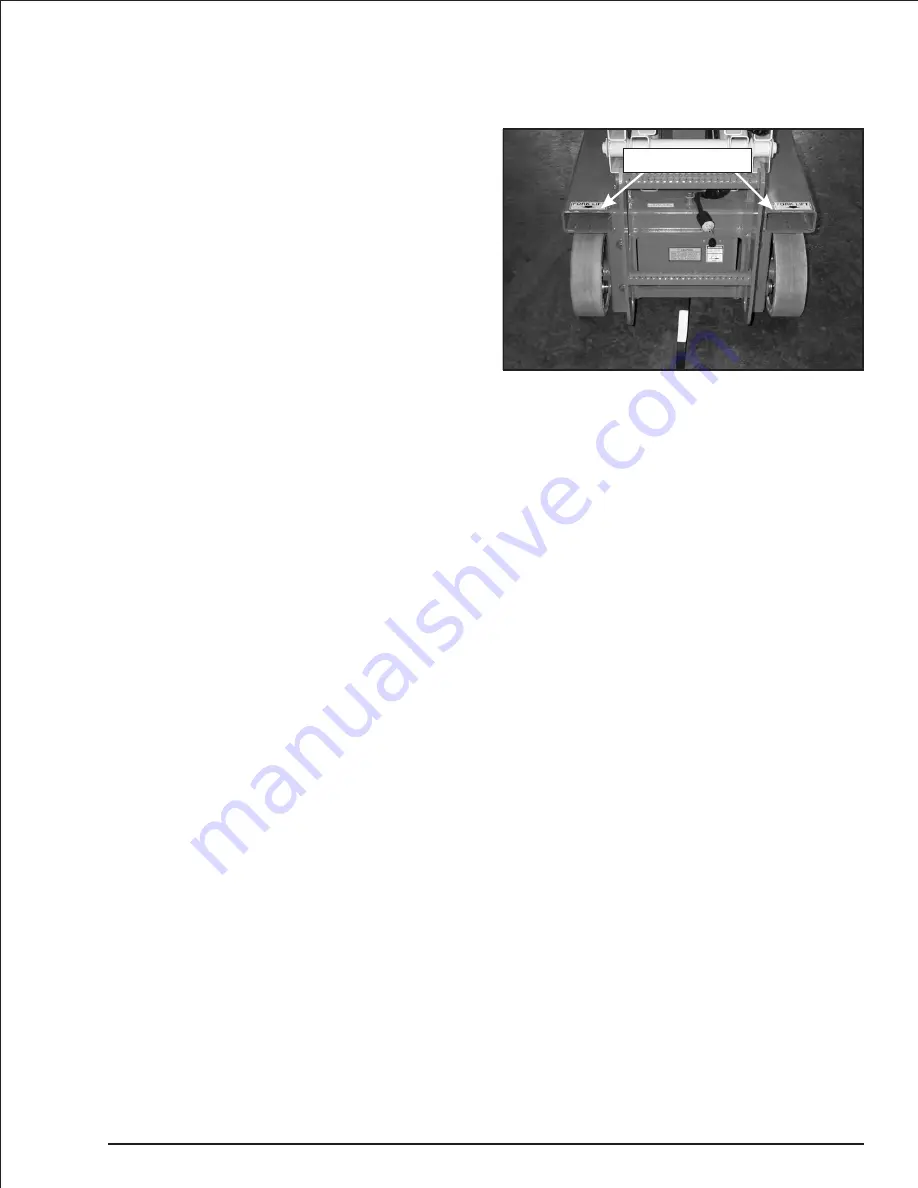
Chapter 10. Stowing and Transporting
To prevent unauthorized use and damage, properly
stow the aerial platform at the end of each work day. It
must also be properly stowed while transporting.
Stowing
Use the following procedure to properly stow the aerial
platform.
1. Retract the platform extension.
2. Fully lower the platform.
3. Push the emergency stop button in.
4. Turn the battery disconnect switch off and lock it.
5. Securely close the swing-out trays.
Transporting
The aerial platform may be moved on a transport vehi-
cle. Depending on the particular situation, the aerial
platform may be lifted with a forklift, winched, driven, or
hoisted onto a vehicle such as a truck or trailer. Lifting
with a forklift is the preferred method.
The equipment used to load, unload, and transport the
aerial platform must have adequate capacity. The gross
vehicle weight is listed in Chapter 2 and is stamped on
the serial number placard.
The user assumes all responsibility for choosing the
proper method of transportation, and the proper selec-
tion and use of transportation and tie-down devices,
making sure the equipment used is capable of support-
ing the weight of the aerial platform and that all manu-
facturer’s instructions and warnings, regulations and
safety rules of their employer, the DOT and/or any other
state or federal law are followed.
Lifting With a Forklift
Use the following procedure to lift the aerial platform
with a forklift.
1. Properly stow the aerial platform.
2. Remove all personnel, tools, materials, or other
loose objects from the platform.
3. Insert the forklift forks into the pockets (refer to Figure
10.1) or at the designated points under the pothole
protector skids to lift the machine.
Figure 10.1—Forklift Pockets
4. Do not raise the aerial platform higher than necessary
to transport it. Drive the forklift slowly and carefully
when transporting the aerial platform.
Winching
Use the following procedure to winch the aerial platform
onto the transport vehicle.
1. Position the transport vehicle so the aerial platform
will not roll forward after it is loaded.
2. Remove any unnecessary tools, materials, or other
loose objects from the platform.
3. Drive the machine to the foot of the loading ramp
with the front wheels nearest the ramp. Make sure
the machine is centered with the ramps and that the
steering wheels are straight.
4. Properly stow the aerial platform.
The aerial platform is free to move when the brakes
are released. Death or serious injury can result.
Re-enable the brakes before operating the aerial
platform.
5. Use a
7
/
8
″
wrench to rotate each brake release cam
90° (refer to Figure 10.2). Rotate the cam on the right
brake cylinder counterclockwise and the one on the
left brake cylinder clockwise.This will retract the brake
pins from the wheel lugs releasing the brakes. Re-
move the wrench.
S1930 – 0361266
10 - 1
Forklift Pockets
A
DANGER



































